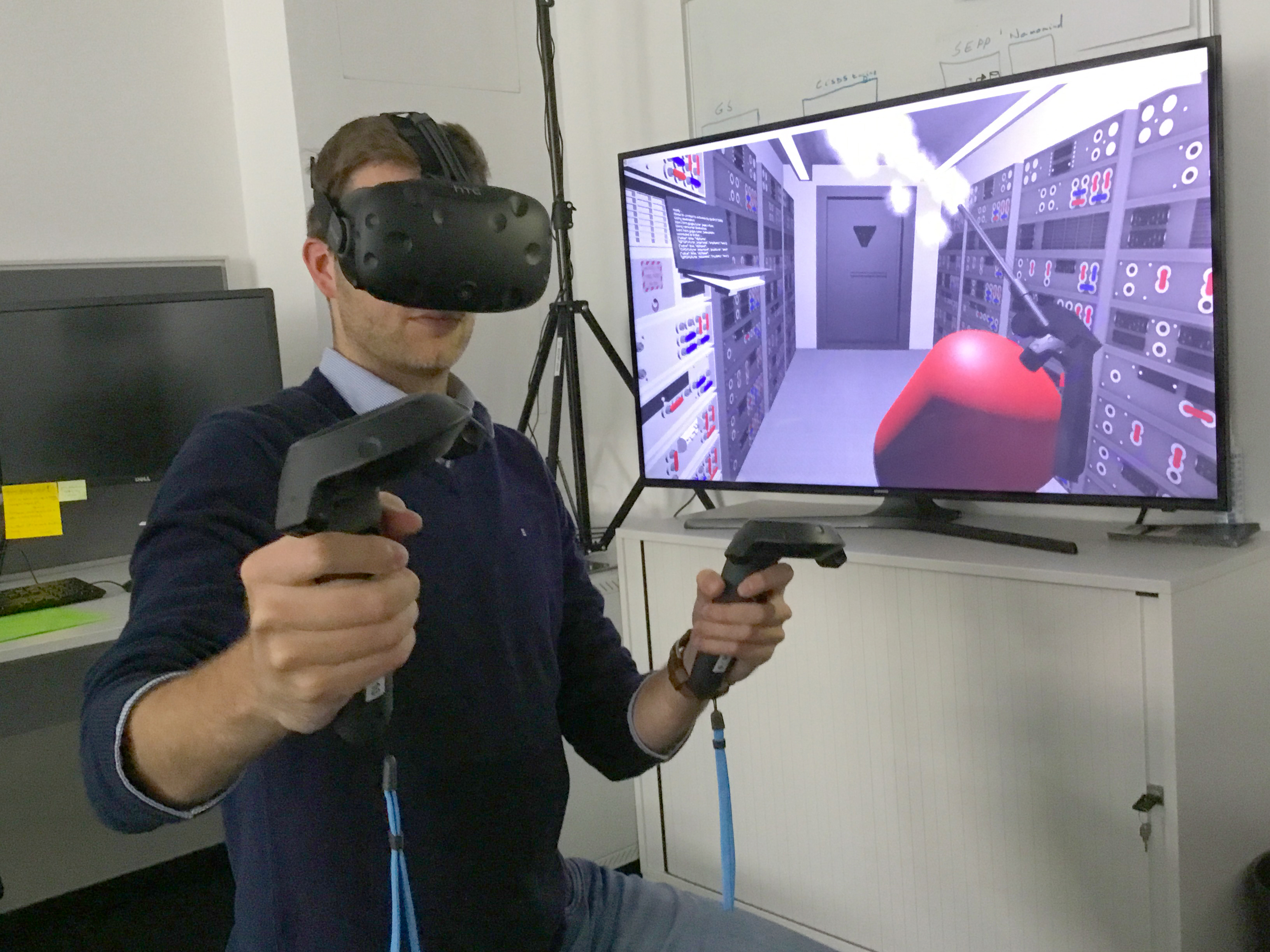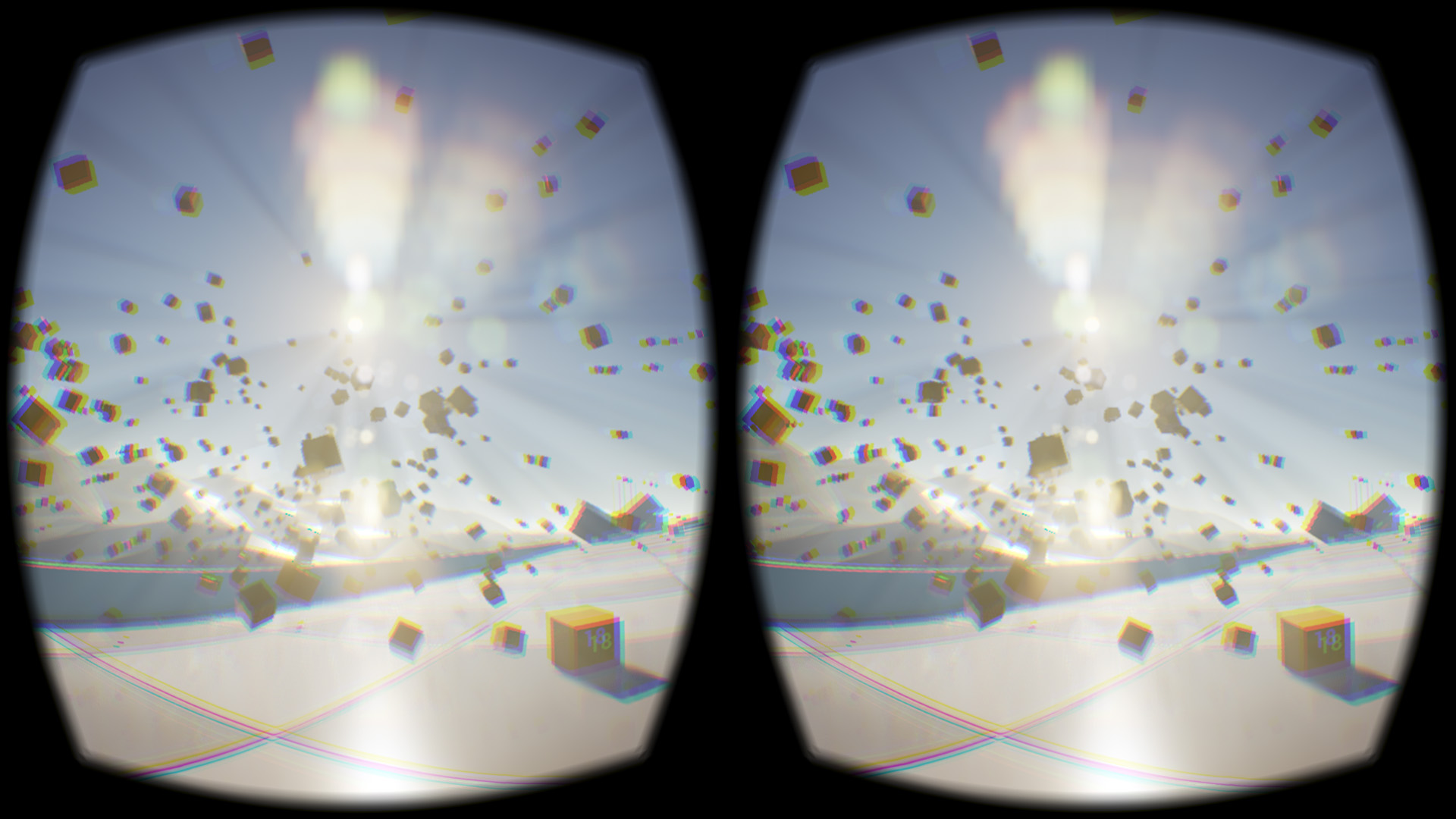What happens when virtual reality can trick you into believing that it is not just a simulation?
In his article “Virtual Reality is ‘Finally Here’: A Qualitative Exploration of Formal Determinants of Player Experience in VR” Dooley Murphy explores the effects of VR systems’ sensorially immersive experiences on player experience. Murphy addresses digital games’ different features that could be experienced as stress-inducing factors when the player actually feels that they are the player character in a VR simulation.
Murphy begins by noting that in comparison to the VR systems of the past, modern VR technology is cheaper, more practical and more advanced. It is now also an established part of gaming for both consumers and game researchers. Through extensive research, VR systems have also become essential in media-augmented therapy. He explains that VR also has the capability to manipulate the actions, attitudes and beliefs of its users in both positive and negative ways. This justifies the importance of researching the basics of presence, clinical VR and the influence and effects of media into VR as part of mainstream gaming.
Murphy approaches the topic via an analysis of immersive virtual environments (IVEs) in material gathered from historical research on VR and technologically simulated presence. He stresses the importance of two factors: spatial presence, and affect and emotion-directedness. Murphy notes that the state-of-the-art theory in presence research demands presence to be viewed as an “inherently embodied perceptual-cognitive phenomenon” and that spatial presence meets this need. He defines spatial presence as a product of being embodied in an environment and exploring it using one’s senses, leading to the belief that the person themselves is located within it.
Moving on to affect and emotion-directedness, Murphy addresses the difference between an affect and an emotion. He clarifies that an affect is primarily a reaction, while an emotion is an intentional state with a clear object. Murphy bases his research partly on Bernard Perron’s division of different emotions about the different levels of the overall game experience. The division contains Fiction (F) emotions, describing concern for the story regarding the game characters; gameplay (G) emotions, describing the player’s own experience of playing the game; and artefact (A) emotions, concerning the game as an object. These distinctions are important, since VR gameplay sometimes demands both automatic attention allocation and automatic cognitive processing, which make the player “momentarily ‘forget’ they are controlling an avatar”. He also adds a fourth category: I emotions, describing the feeling of threat to the player themselves in VR.
Murphy divides the findings of his analysis into different forms of typical content: human agent(s), events (or actions), ambient features, objects, and nonhuman agents. Based on these findings and different cognitive theories, he then follows with a framework of the process of the way IVE stimuli are presented by the VR simulation and perceived by the player.
The framework progresses from capturing VR users’ attention via a stimulus to generating concerns, following with limiting the user’s agency (or the sense of it). Murphy explains that capturing attention is influenced by proximity to different stimuli (in space and time), animacy (the tendency of virtual humans and non-humans to move and act), realism perceived by the player, and plausibility of objects or events. The second part of the framework, generating concerns, is related to Perron’s division of emotions and includes diegetic concerns, simulation concerns, artefactual concerns and self-directed concerns. The third part, limiting the user’s agency, is formed through both hardware and software causing inability to (re)act, guilt/culpability and shifts from freedom to containment to confinement.
Murphy sees the framework as contributing to understanding user/player experience in VR as affected by patiency – being an object of the events (in contrast to agency). The concept of patiency comes into play in VR when the player perceives virtual dangers and other stimuli in the game as real, “whenever a VR game […] manipulates virtual objects and agents” to make the player feel “exposed, uneasy, or overwhelmed”. Murphy also discusses a sense of physical bodily presence being inseparable from modern VR. He concludes by remarks on affirmation that VR ‘feels more real’ than traditional digital games, VR systems making use of players’ embodied presence, the capability of VR to embody and express ideas, values and norms, and the need for future research on the topic to focus more on published VR games – as opposed to Murphy utilizing simulations not intended as games –, to gather data about the players’ physical experience, and to take into account the roles of body schema and body image.
Article: Virtual Reality is ‘Finally Here’: A Qualitative Exploration of Formal Determinants of Player Experience in VR
Author: Dooley Murphy
Publication: DiGRA 2017
Published: July 2017
Online: http://www.digra.org/wp-content/uploads/digital-library/11_DIGRA2017_FP_Murphy_Virtual_Reality.pdf
Images © Wikipedia and Wikimedia Commons, respectively.
You might also like
More from Game Research Highlights
How do you want to do this? – A look into the therapeutic uses of role-playing games
Can playing RPGs contribute positively to your wellbeing? A recent study aims to find out how RPGs are being used …
Eldritch horrors and tentacles – Defining what “Lovecraftian” is in games
H.P. Lovecrafts legacy lives today in the shared world of Cthulhu Mythos and its iconic monsters. Prema Arasu defines the …
Are Souls Games the Contemporary Myths?
Dom Ford’s Approaching FromSoftware’s Souls Games as Myth reveals the Souls series as a modern mythology where gods fall, desires …

















